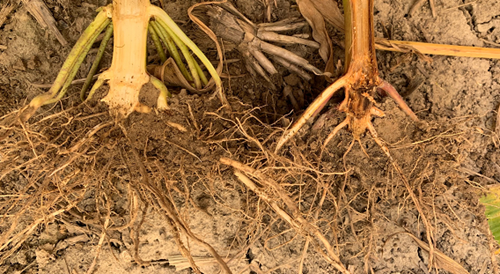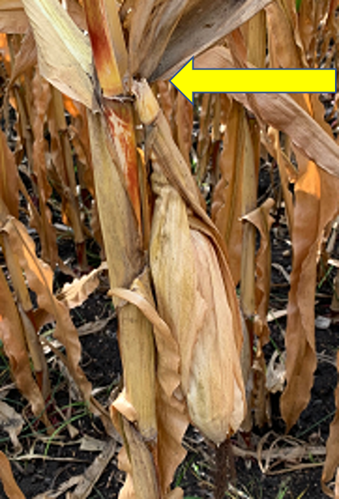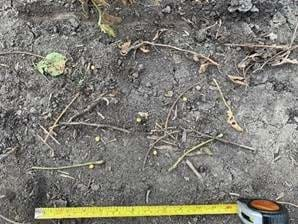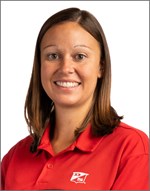Harvest 2021 Underway
BY Dairyland Seed Agronomy Team
SCOUTING CORN FOR STALK INTEGRETY
With corn harvest upon us, it is a good idea to scout fields for stalk integrity. In some areas that experienced dry conditions, stalk integrity is being compromised by cannibalization. Other areas are seeing weakened stalks from diseases like Tar Spot and Anthracnose. Evaluating stalk integrity allows us to prioritize which fields need to be harvested first and which ones can wait.
The common procedure is to check fields that were planted in “less than ideal conditions” as well as shorter day hybrids first. Walk across a portion of the field and perform Pinch, Push, Shove and Slash tests along the way looking at both green healthy plants and also plants that are yellow/tan and or stunted:
- Pinch the stalks 4-8” off the soil level. If it collapses, you have a crown or stalk rot, or both.
- Push the stalks so the top of the plant touches the row across from it. If it buckles under that pressure, odds are you have a stalk rot.
- Shove a few stalks down the row and see how much pressure it takes to break them. The less pressure it takes to break them, increases the probability of standability issues.
- Slash or cut the stalk 10-12” above the soil line with a sharp knife down to or through the roots (Remember to be safe and cut away from yourself). It is a good idea to dig up the plant first before cutting. The crown and stalk should be a white or creamy color. The photo below shows a healthy stalk and root on the left, whereas, the stalk and root on the right is not healthy. If it is not, that plant has a crown or stalk rot.

The more plants that fail these tests, increases the odds that you will need to harvest that field early or move it up in the harvest schedule. Remember that these affected plants will be more susceptible to wind damage, the longer the harvest window gets.
Lastly, look at the shank attachment from the corn ear to the stalk. The longer we wait to harvest the more stress we tend to see on this shank. This is especially apparent when we have:
- Repeated strong or gusty winds that cause the corn ear to swing back and forth
- Large corn ears that put additional stress on that shank
- Drought stressed corn tends to have a smaller shank attachment

The more plants that fail these tests, increases the odds that you will need to harvest that field early or move it up in the harvest schedule. Remember that these affected plants will be more susceptible to wind damage, the longer the harvest window gets. Having and following a harvest order decreases the likelihood of harvesting down corn, and increases the likelihood of capturing more yield but also having a safer and less stressful harvest season.
CALCULATING HARVEST LOSS
The growing season is complete and there is just one major task yet to accomplish: bringing in the crop. Not just bringing it in but, reaping as much of the crop as possible you’ve worked hard to grow. Harvest loss can leave dollars in the field and encompasses several areas. We can look at harvest loss in two aspects.
- Machine loss
- Plant and weather loss
The first area, getting the combine set correctly or machine loss, is perhaps the most discussed. Once set, continual “tweaking “may be needed as we progress through the season and harvest conditions change. This is where a relationship with the Dairyland Seed agronomists isn’t as crucial as the relationship with the service personnel at the equipment dealership. They have a similar role as an agronomist; however, they work with iron and we work with plants. So have their numbers handy when the basics don’t seem to work correctly.
Pre-harvest losses are those lost in the field prior to the combine running through the crop. The only way to manage this is harvest timing, hybrid or variety selection and luck of avoiding weather events. This aspect involves plant and weather loss:
- Poor stalks and plant lodging so harvest is not possible
- Ear drop
- Pod shatter
- Wind damage and blown over crop
- Root lodging in a manner that crop cannot be harvested
The next area is assessing header loss:
- Are you shattering beans at the header?
- Butt shelling at the stripper plates
- Losing whole ears through the stripper plates
- Flipping ears out of the corn head
The final area is actual threshing losses:
- Cylinder and rotor losses
- Fan speed too high or low
- Sieves and cleaning losses
All these areas of concern get added together for calculating field harvest loss. The process for checking this is to determine the amount of preharvest loss, then run your machine in typical field conditions. Stop the machine while in those typical conditions and back up about half the length of the combine to just before where the crop residue and threshed material has exited the combine. This is the area to assess header loss. Then assess the area where crop debris has been processed through the combine directly behind the machine. With these numbers in hand, you can then determine preharvest loss, header loss and separator loss for a total harvest loss number.
Most sources recommend using 10 square feet to calculate loss. Measuring off a 2 foot by 5 foot area or using a ready-made frame and then counting the kernels or seeds left behind. Experts tell us that 20 corn kernels and 40 soybean seeds within that area equals about one bushel per acre. What is acceptable loss? Resources would suggest no more than 3 percent in soybeans and 1.8 to 2 percent in corn. However, it is possible to reduce those numbers with some extra attention. So if that’s acceptable on just 60 bushel beans, no wonder some years it looks like we reseeded the crop. We have left almost two bushels on the ground! We normally seed approximately one bushel per acre so you can easily see the importance of managing harvest losses.
Remember stay calm and be safe this harvest season.

Six loose beans in 1 square foot
Reference: https://www.canr.msu.edu/news/measuring_soybean_harvest_ losses
 |
 |
 |
 |
 |
| Brian Weller Western Region 507.456.3034 |
Dan Ritter Central Region 219.863.0583 |
Branden Furseth Northern Region 608.513.4265 |
Mark Gibson Eastern Region 260.330.8968 |
Amanda Goffnett Eastern Region 989.400.3793 |
